Age of Jackson
Rivers, Roads & Rail
From 1828 to 1860, traveling in Tennessee greatly improved. Paved roads called turnpikes made it easier to get from one town to another.
Tennesseans began to enjoy new technologies like the steamboat and train. It became easier and faster to move people and goods from place to place.
Steamboats were very important because they made it cheaper and quicker to ship farm produce and other goods by river. West Tennessee and Middle Tennessee had rivers that steamboats could easily navigate.
In contrast, it was very difficult for steamboats to navigate rivers in East Tennessee due to natural obstructions like Muscle Shoals . Both Memphis on the Mississippi River and Nashville on the Cumberland River became important places for steamboats to pick up and drop off goods.
Trains were marvels of invention to many people. Not only did it provide a much more comfortable ride, it went a lot faster. Even at speeds of 20 miles an hour, trains in this era went twice as fast as a stagecoach.
One man in 1835 upon seeing a train for the first time wrote “what an object of wonder! How marvelous it is in every particular.”
One man in 1835 upon seeing a train for the first time wrote “what an object of wonder! How marvelous it is in every particular.”
Starting in the 1830s, many Tennesseans believed the railroad was the key to improving transportation. But, many early railroad companies in Tennessee failed, despite support from the state government.
Between 1850 and 1860, railroads started to become successful. More than 1,000 miles of track was built during this time. Important railroads in the state included companies like the Nashville & Chattanooga, the Memphis & Charleston, and the East Tennessee & Georgia.
Picture Credits:
- Photograph of Depot Bottom. This photo was taken in 1871 near present day McMinnville, Tennessee. A dirt road can be seen in front of several buildings. Farms are also shown in the background. Tennessee State Library and Archives
- Photograph of the U. S. Clinch. The Clinch was a steamer that was built in Kingston, Tennessee. Tennessee State Museum Collection, 82.127
- Drawing entitled, “Ferry at Chattanooga.” This drawing shows a small boat near Chattanooga on the Tennessee River. The foreground shows two women on the shore, while a man is shown on the ferry. Tennessee State Library and Archives
- Photograph of the Nashville, Chattanooga and St. Louis Railroad. This photo shows railcar engine # 3, the V. K. Stevenson, named in honor of the railroad president. Three men are shown standing in front of the train, while the conductor can be seen through the window. Several buildings are also shown in the background. Tennessee State Museum Collection, 3.629
- Photograph of a railroad tunnel. It shows the opening of a tunnel for the Nashville, Chattanooga, and St. Louis Railroad. Two young boys are shown sitting near the opening by the shore of the river. Tennessee State Library and Archives
- Drawing entitled, “The Tennessee at Chattanooga.” This drawing shows cargo being unloaded off a boat unto wagons by the Tennessee River near Chattanooga. Numerous men and mules can be seen on the right side. Tennessee State Library and Archives
- Photograph showing a wagon road. The road is shown covered with fall leaves and a split rail fence is shown on the left. It shows the Cumberland Plateau near the area of Monterey and Muddy Pond. This photo was taken in 1970 by Jack Stoddart and illustrates how dirt roads in the 1800s might have looked. Tennessee State Museum Collection, 2008.182.10
Age of Jackson >> Tennessee's People >> How They Worked >> Rivers, Roads & Rail
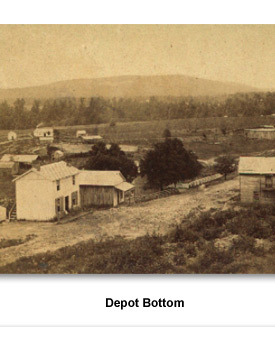
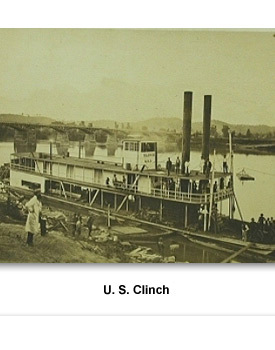
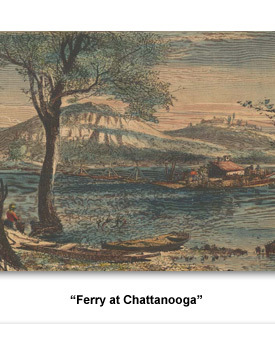
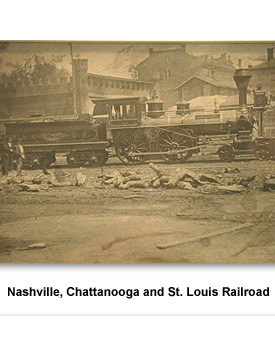
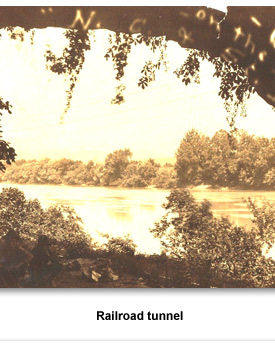
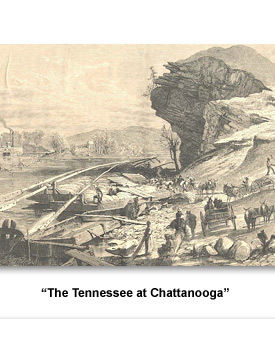
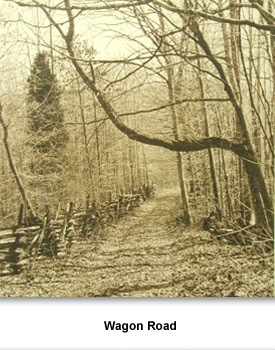
 Sponsored by: National Endowment for the Humanities
Sponsored by: National Endowment for the Humanities